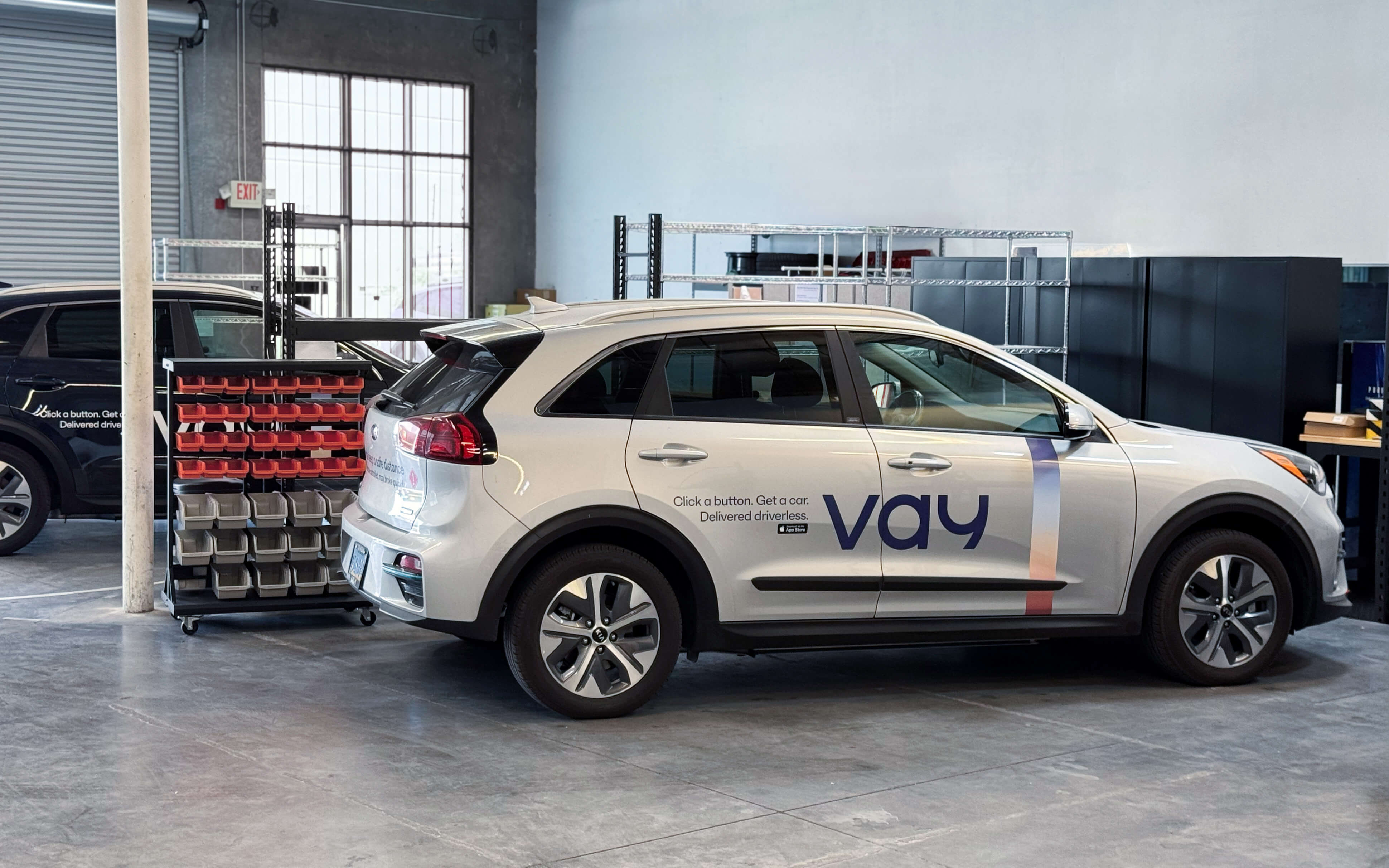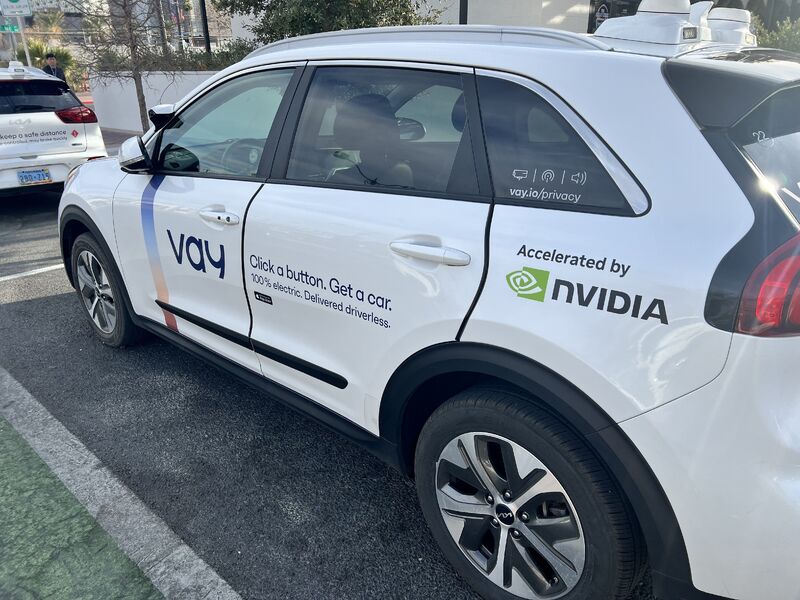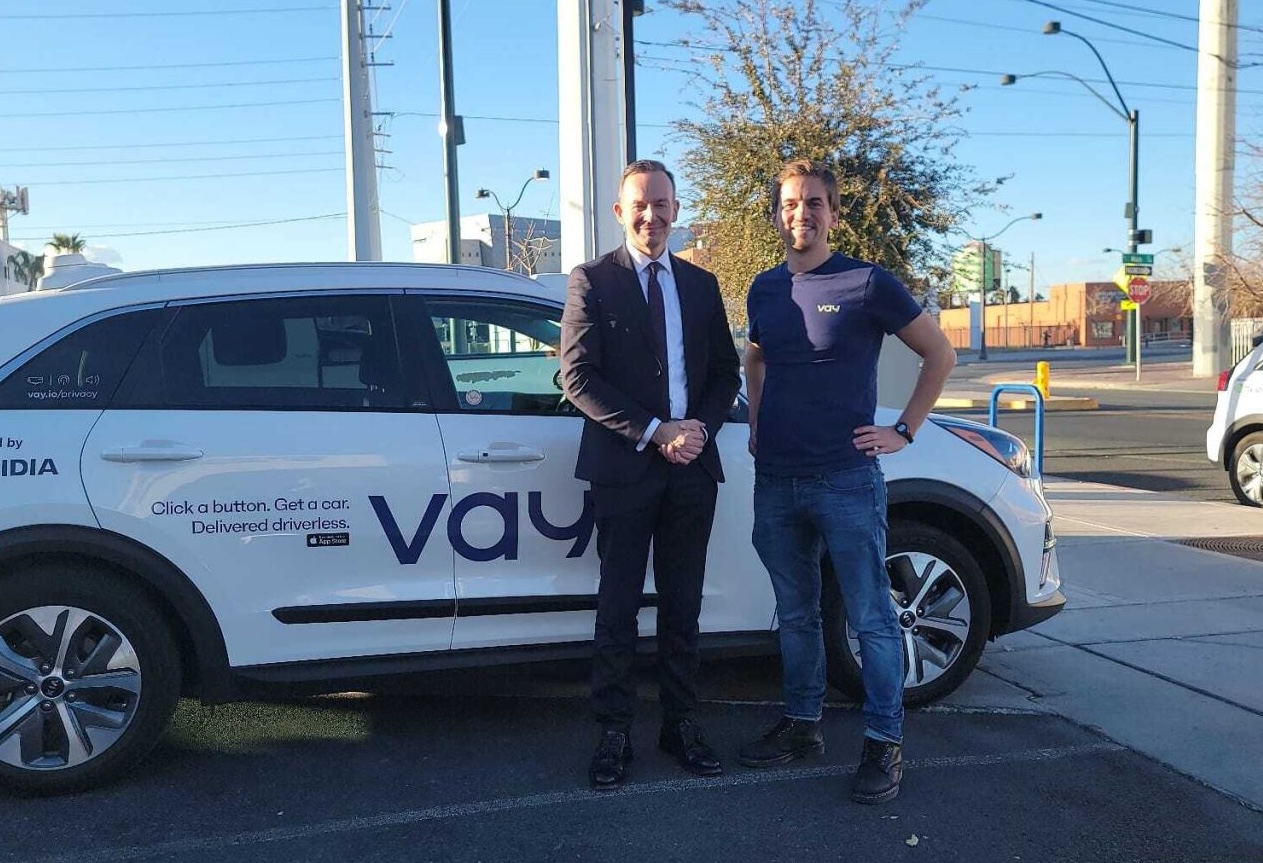Vay Community – CES 2025 kicked off the year with incredible energy, setting the stage for what promises to be a transformative year for Vay and the driverless industry. This is Thomas, CEO and Co-Founder of Vay, and here are my thoughts inspired by this year’s CES in Las Vegas. Plus some exciting media highlights, including a reel from WIRED that went viral, receiving more than a million views on Instagram and TikTok.
1. Robotaxis and the Hidden Driver: My Thoughts on the Autonomous Road Ahead
Autonomous technology took center stage at CES, with companies like NVIDIA, Waymo, and Zoox showcasing advancements in autonomous driving. I’m personally very excited about a world where robotaxis will be everywhere. From my perspective, Waymo is the main company positioned to scale robotaxis in the U.S. within the next 1–3 years, with May Mobility and Zoox trailing. It is important to remember that Waymo still faces some technical challenges, as highlighted by recent incidents such as collisions with delivery robots or driving into wet concrete, but I believe the biggest question to its growth is its willingness to continue its financial subsidies. The additional hardware costs of sensors (primarily LiDAR) and high-performance computing systems are estimated to be at up to $200,000 per vehicle. In other words, $200 million dollars for 1,000 vehicles. That is a lot. Even for Google. According to a recent McKinsey analysis, in a typical U.S. city with 1,000 autonomous vehicles in operation, current robotaxis’ cost per vehicle mile traveled (VMT) is estimated at $8.20. In comparison, ride hailing is $1-$2 per mile traveled. As robotaxis will have to price similarly to ride-hailing, they currently need heavy subsidies. But that gap will close over time as sensor and compute costs get less expensive. I believe Waymo will continue its subsidies, so we will see continued growth in 2025. The $8.20 per mile also includes costs for remote human operators, which are a crucial part for all autonomous driving companies to solve situations that the computer cannot solve alone, yet. Informal sources say that it is about 5% of the time for Waymo. Notably, even Elon Musk recently acknowledged the development of remote driving capabilities at Tesla. So, I see remote driving as the hidden driver to enable and scale autonomy.

May Mobility is also well positioned to achieve growth, even though it will likely be slower given its customers are cities and governments rather than end customers. Zoox’s future remains a bit more uncertain, as it first has to commercially roll out its first service to the public “quite soon” this year and then rely on Amazon’s resources to fund its fleet rollout. I’m all voting for them!
The European Union, unfortunately, does not have any advanced player in the robotaxi industry. I would love to see that change!
Tesla and Wayve, pursuing camera-based, end-to-end learned approaches, will need to first overcome technological and safety-architecture related risks and I believe remain a few years away from city-wide commercial robotaxi deployment without safety drivers. It is important to keep in mind that they have not done a trip without a safety driver on public streets yet. Waymo first tested its self-driving vehicles without a safety driver in November 2017 and it took them many years to get to a city-wide rollout. Also, keep in mind that similar to Daimler, BMW and other OEMs, Tesla and Wayve’s main business models are driver assistance systems, and not robotaxis.
So where does this leave Vay?
At Vay, we envision a future where robotaxis and driverless carsharing services coexist, just as ride-hailing and carsharing coexist today. Driverless carsharing offers a highly cost-effective alternative to ride-hailing or robotaxis – if they emerge – at about half the price. Driverless carsharing removes the hassle of walking to a vehicle, parking it, or even charging it. It offers the flexibility to take trips ranging from a few minutes, to a few hours, to several days, even to remote or less dense locations where robotaxis may not operate. On the other hand, robotaxis provide a different kind of convenience, allowing passengers to read, nap, or focus on other activities while being transported to their destination. Both services will cater to different needs and use cases, offering users flexibility and efficiency. I can’t wait to live in such a world.
2. Expanding Remote Driving Mobility in Las Vegas and Beyond
Given the momentum for remote driving, I’m more confident than ever in its transformative potential. Last January’s announcement highlights our dedication to serving our growing customer base in Las Vegas, delivering a seamless and reliable experience for everyone. Over the coming months, we’ll be expanding our fleet to 100 vehicles in Las Vegas, supported by our new 8,500 sq. ft. production facility. Additionally, we’ll be hiring more remote drivers, including—for the first time—truck drivers, as we continue to broaden our capabilities and applications. This investment marks a significant milestone in Vay’s growth.
3. Vay in the News
CES 2025 presented a unique opportunity to connect with the media, prospective partners, regulators, and tech enthusiasts. Here are some key moments that stood out:
‣ We showcased our long-standing collaboration with NVIDIA and co-branded our cars. See for yourself.

‣ We conducted 18 demonstrations for B2B partners, exploring a variety of use cases, from remote driving integration into privately owned vehicles through to applications for trucks and autonomous vehicles. These discussions reinforced the versatility of remote driving and its potential to address diverse industry needs.
‣ German Federal Minister Volker Wissing experienced remote driving firsthand during a ride in one of our cars on the streets of Las Vegas. His presence not only reaffirmed support for Germany’s national teledrive law, but also served as a powerful reminder of the progress we’ve made in a European context. As Süddeutsche Zeitung also highlighted, his visit underscores the crucial importance of advancing regulatory frameworks to support innovation.

‣ Over 20 journalists from around the world had the opportunity to experience our technology firsthand. Additionally, our recent announcement and innovations were featured in over 50 articles, including prominent publications such as TechCrunch, CNN, and Handelsblatt. Check out more below.
‣ And one of my favorites: A reel from WIRED went viral, receiving more than a million views on Instagram and TikTok.
Looking Ahead
The road ahead is full of opportunity, and I’m eager to continue contributing to the future of driverless mobility.
Greetings from Vegas,
Thomas von der Ohe
CEO & Co-Founder of Vay










